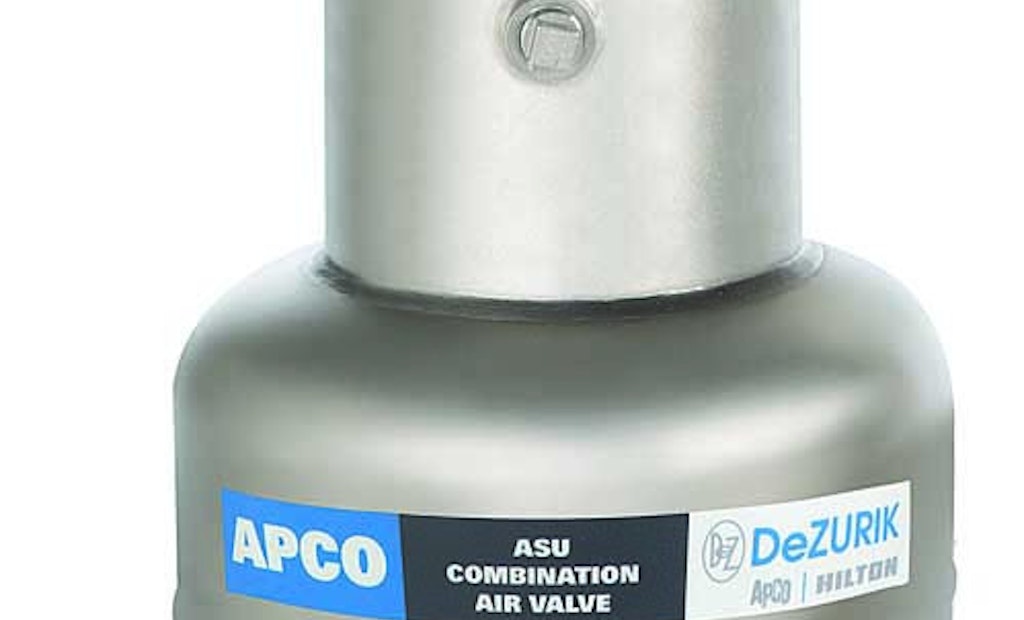Interested in Valves?
Get Valves articles, news and videos right in your inbox! Sign up now.
Valves + Get AlertsAPCO single-body combination air valves (ASU) from DeZURIK are designed to operate effectively on pipes filled with fluids containing grit, solids and grease that coagulate and can render some air valves inoperable.
Features include an oversized float designed to be buoyant in grease and keep dirty fluid level low. The upper body shape includes a splash reduction ring and air compression chamber to further limit fluid levels and restrict solids interference. The valve has no linkages that can foul in dirty service applications.
“We have had tremendous success applying the ASU valve in difficult grease applications,” says John Skalla, municipal sales manager for DeZURIK. “The longer a customer can keep their valve clear of grease and operating, the more money they save on maintenance and efficiency.”
Made of 316 stainless steel, the combination air valve is available in 1- through 6-inch sizes and has an operating range of 2 to 150 psi, as well as a new extended range of 2 to 300 psi. It is available with flanged or threaded ends and meets requirements of AWWA C512.
Lighter than traditional cast iron valves, a 2-inch ASU combination valve weighs 40 pounds versus valves weighing up to 100 pounds. It is also shorter than traditional valves — 20 versus 30 or more inches tall.
“Combination air valves handle air in a pipe in two ways,” Skalla says. “First, when filling or draining a pipe, air needs to be let out or in quickly, or damage such as pipe collapse can occur. Also, air forms naturally in flowing liquids and must be released so it doesn’t collect at high points in the pipeline, reducing or preventing liquid flow, among other problems.”
The inlet and outlet are the same size on the ASU, eliminating restrictions that occur in other valves. It ensures the ASU is protecting the pipe from vacuum collapse. Dual-range air release capacity and pipe pressure does not affect orifice sizing.
“The benefit is one valve size handles a wide range of capacities and pressures. Often, one valve size can be used in the entire pipeline,” Skalla says.
“I hear stories where multiple valves of various sizes are removed from the pipe for cleaning and maintenance, but the customer forgot to record their location. Traditional air valves must have their orifice sizes selected specifically in each location. Installing them in the wrong location is a problem. With our dual-range air release, we’ve eliminated that problem.” 320/259-2000; www.dezurik.com.






